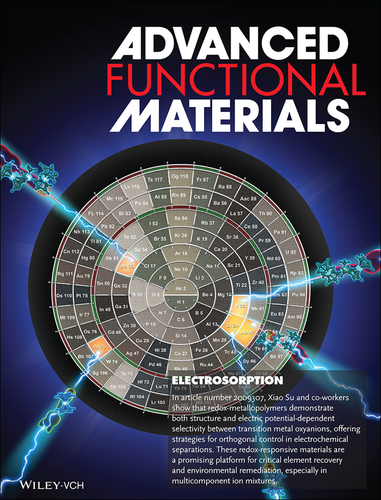Structure and Potential-Dependent Selectivity in Redox-Metallopolymers: Electrochemically Mediated Multicomponent Metal Separations

BibTeX
Electro‐responsive functional materials can play a critical role in selective metal recovery and recycling due to the need for molecular differentiation between transition metals in complex mixtures. Redox‐active metallopolymers are a promising platform for electrochemical separations, offering versatile structural tuning and fast electron transfer. First, through a judicious selection of polymer structure between a main‐chain metallopolymer (polyferrocenylsilane) and a pendant‐group metallopolymer (polyvinylferrocene), charge‐transfer interactions and binding strength toward competing metal ions are tuned, which as a result, dictate selectivity. For example, almost an order of magnitude increase in separation factor between chromate and meta‐vanadate can be achieved, depending on polymer structure. Second, these metallopolymer electrodes exhibit potential‐dependent selectivity that can even flip ion preference, based solely on electrical means—indicating a control parameter that is orthogonal to structural modifications. Finally, this work presents a framework for evaluating electrochemical separations in multicomponent ion mixtures and elucidates the underlying charge‐transfer mechanisms resulting in molecular selectivity through a combination of spectroscopy and electronic structure calculations. The findings demonstrate the applicability of redox‐metallopolymers in tailored electrochemical separations for environmental remediation, value‐added metal recovery, waste recycling, and even mining processing.

